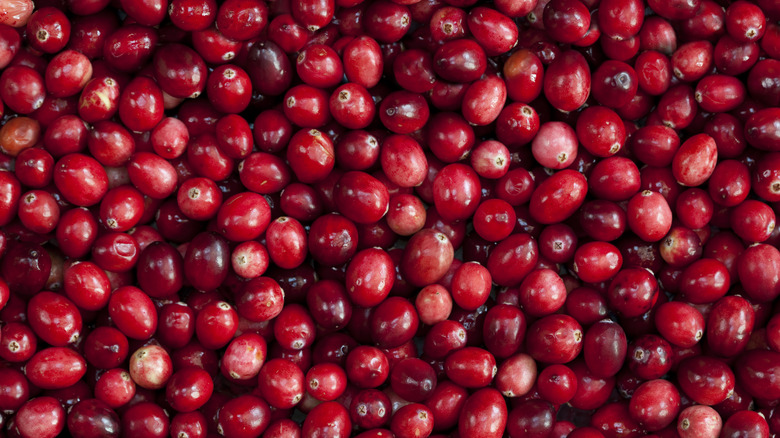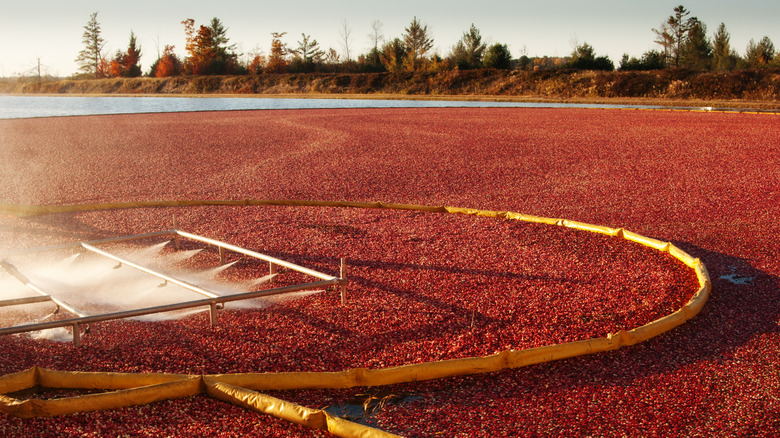Your Cranberries Probably Come From One Or 2 States
Let's talk about cranberries. No, not the '90s Irish rock band known for chart-topping tracks like "Zombie," "Dreams," and "Linger." We're talking about the tiny, tart, antioxidant-rich, ruby-colored berries that have become synonymous with Thanksgiving. So, where do these nutritious and fruity beauties come from?
Cranberries are grown throughout the US, with the top producers being Wisconsin, Massachusetts, New Jersey, and Oregon. In fact, the vast majority of the world's cranberries hail from North America, with the United States producing more than 355,000 tons annually.
Wisconsin is the dominant cranberry producer, boasting over 250 cranberry farms that yield over 4.5 million barrels per year. Cranberries have been harvested in Wisconsin since the mid-19th century, and over time, farmers have become keen experts in their cultivation and production. Wisconsin's cranberry farms are primarily located in the central and northern regions of the state, where the soil and climate are ideal for growing these berries. In addition to their economic importance, Wisconsin's cranberry farms are also a source of natural beauty and ecological diversity. With their unique blend of practicality, beauty, and environmental importance, Wisconsin's cranberry farms are a vital part of the Badger State's cultural and economic landscape.
Wisconsin and Massachusetts are cranberry havens
For even more bouncy cranberry goodness outside of Wisconsin, head northeast to the Bay State. Massachusetts ranks as America's second-largest producer of cranberries, yielding about 2 million barrels each year. Cranberries are considered a staple of the state's agriculture, with many small family-run farms operating throughout the region. Cape Cod, in particular, is known for its extensive cranberry bogs that stretch across its landscape.
With its humid summers, moderately cold winters, and numerous freshwater ponds, Cape Cod provides optimal weather conditions for cranberries to thrive. Not only that, but the sandy soil and acidic pH provide an ideal growing location. The production of cranberries on Cape Cod dates back centuries, and the Native Americans who once lived on the peninsula regularly harvested wild cranberries for food and medicinal purposes. Today, Cape Cod is home to a robust cranberry industry, with farms cultivating this fruit for both domestic and international markets.
No matter how you enjoy your cranberries — infused into baked goods, added to smoothies, or by their plain selves, the nutrient powerhouses are as iconic as they are delicious.

